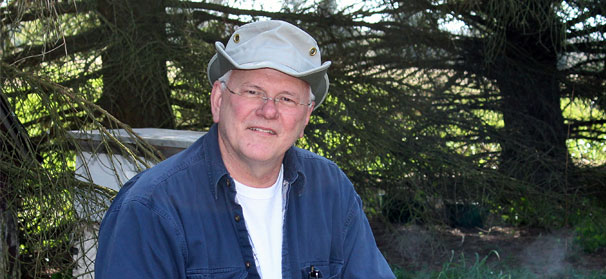

Feb 8, 2013Bee death causes differ from hive to hive
What’s killing the honeybees needed for crop pollination? The reasons vary from hive to hive, said James Tew, an Extension specialist with Auburn University in Alabama and a former professor of entomology with Ohio State University. He spoke during the recent Ohio Produce Growers and Marketers Association’s Winter Congress held in Sandusky, Ohio.
Growers and beekeepers have been demanding an answer to the bee die-off dilemma, Tew said. The problem is that there is no answer, yet. The main point Tew wanted to get across was that there is not just one cause for colony collapse disorder (CCD), and the reasons for bee die-offs are different for each hive. What causes a hive to collapse in California will most likely be completely different from what causes the downfall of a hive in Ohio, he said.
“If we knew what was killing the bees, we would have stopped it a long time ago,” Tew said.
The bee die-off of the past couple of years is the fourth or fifth major issue that Tew has experienced, but it is the worst, he said. It might be that honeybees, not being native to the Americas, are just not suited for long-term life here, he said.
Are chemicals and pesticides to blame? Perhaps, Tew said. The beekeeping industry has a long history of antagonizing, and being antagonized by, the chemical industry – dating back to the 1970s, when massive die-offs were blamed on pesticides. Pesticides have played a definite role in the collapse of some colonies, he said.
Work, mites, a shallow gene pool
One of the underlying causes of CCD is that growers and keepers are working the bees too hard, Tew said.
“Recently, my wife had me install a bunch of those wooden blinds throughout our house,” Tew said. “It was hard work, and when I finished, I wasn’t feeling well. In fact, I thought I was in trouble and, sure enough, for the first time in my 64 years I had come down with the flu. It’s like that with the bees. Throw a few possible illnesses in the mix, and then work them really hard, and they are bound to get sick.”
With high demand for honeybees and a shrinking population, hives are working harder than ever to meet pollination needs, Tew said. Combine that stress with other factors like varroa mites, and the result is CCD.
“Varroa alone is not the villain,” Tew said. “It’s a large, poorly adapted parasite. Bees can survive some parasitism from varroa. What they cannot withstand is the secondary viral invasives that come along with the mites. We know almost nothing about this virus population that is affecting our bees.”
Another issue is genetic diversity. Fewer breeders than ever are responsible for most queen production, Tew said. Most queen bees are now coming from just a few large, corporate-type breeders. This limits the genetic base for all of the commercial bees across the country.
“The bees we use in California are almost the same as those used in Mississippi,” Tew said. “We have some research that says that, genetically, we have bees that are just not conducive to this type of work and life.”
Tew suggests beekeepers try to limit the amount of travel and work for their bees, limit exposure to pesticides as best as possible and keep working with their local Extension and other agencies.
“It’s not going to be one thing that is causing the bee die-off,” he said. “It’s some combination of things that is going to be specific to your hives.”
For more information, visit Tew’s website, One Tew Bee.
By Derrek Sigler, Assistant Editor














